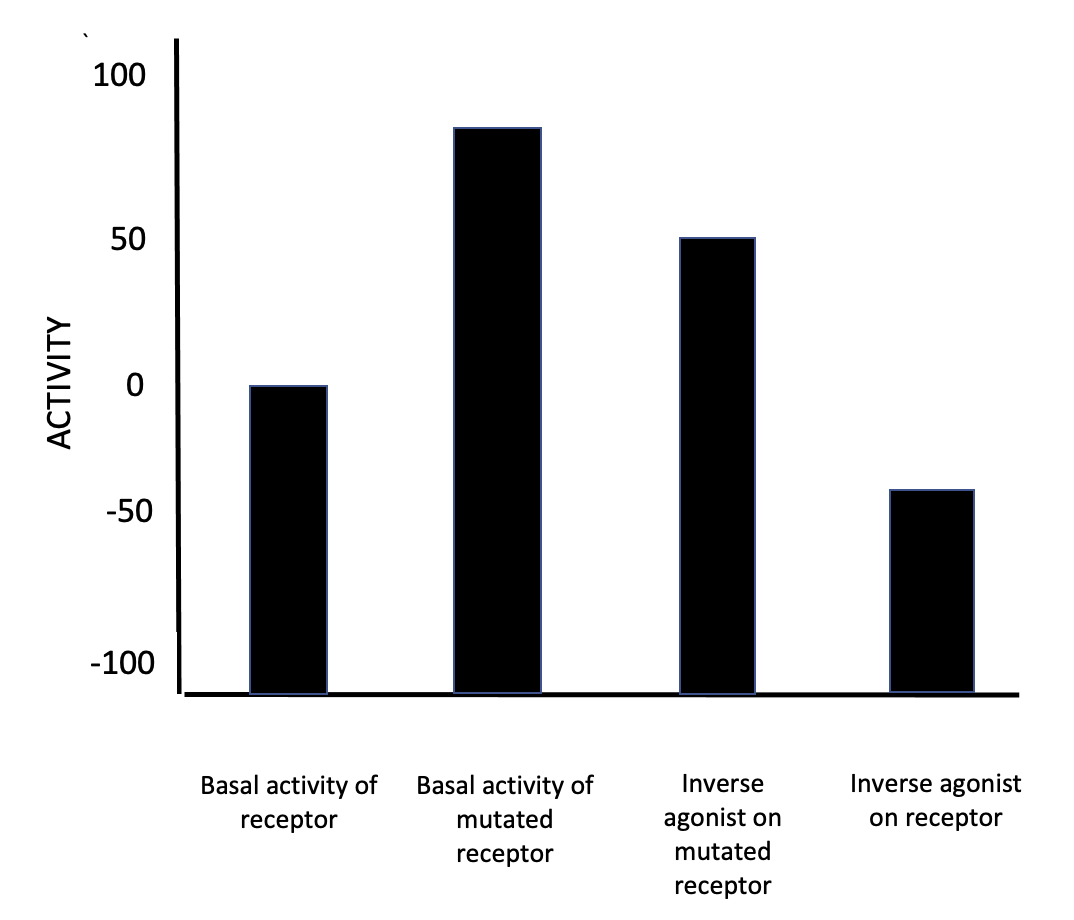|
Betahistine
Betahistine, sold under the brand name Serc among others, is an anti-vertigo medication. It is commonly prescribed for balance disorders or to alleviate vertigo symptoms. It was first registered in Europe in 1970 for the treatment of Ménière's disease, but current evidence does not support its efficacy in treating it. Medical uses Betahistine was once believed to have some positive effects in the treatment of Ménière's disease and vertigo, but more recent evidence casts doubt on its efficacy. Studies of the use of betahistine have shown a reduction in symptoms of vertigo and, to a lesser extent, tinnitus, but conclusive evidence is lacking at present. Oral betahistine has been approved for the treatment of Ménière's disease and vestibular vertigo in more than 80 countries worldwide, and has been reportedly prescribed for more than 130 million patients. However, betahistine has not been approved for marketing in the United States for the past few decades, and there is disa ... [...More Info...] [...Related Items...] OR: [Wikipedia] [Google] [Baidu] |
Ménière's Disease
Ménière's disease (MD) is a disease of the inner ear that is characterized by potentially severe and incapacitating episodes of vertigo, tinnitus, hearing loss, and a feeling of fullness in the ear. Typically, only one ear is affected initially, but over time, both ears may become involved. Episodes generally last from 20 minutes to a few hours. The time between episodes varies. The hearing loss and ringing in the ears can become constant over time. The cause of Ménière's disease is unclear, but likely involves both genetic and environmental factors. A number of theories exist for why it occurs, including constrictions in blood vessels, viral infections, and autoimmune reactions. About 10% of cases run in families. Symptoms are believed to occur as the result of increased fluid buildup in the labyrinth of the inner ear. Diagnosis is based on the symptoms and a hearing test. Other conditions that may produce similar symptoms include vestibular migraine and transien ... [...More Info...] [...Related Items...] OR: [Wikipedia] [Google] [Baidu] |
Prader–Willi Syndrome
Prader–Willi syndrome (PWS) is a rare genetic disorder caused by a loss of function of specific genes on chromosome 15. In newborns, symptoms include hypotonia, weak muscles, poor feeding, and slow development. Beginning in childhood, those affected become constantly hungry, which often leads to obesity and type 2 diabetes. Mild to moderate intellectual impairment and Behavioural problems, behavioral problems are also typical of the disorder. Often, affected individuals have a narrow forehead, small hands and feet, short height, and light skin and hair. Most are Infertility, unable to have children. About 74% of cases occur when part of the father's chromosome 15 is deleted. In another 25% of cases, the affected person has Uniparental disomy, two copies of the maternal chromosome 15 from the mother and lacks the paternal copy. As parts of the chromosome from the mother are turned off through Genomic imprinting, imprinting, they end up with no working copies of certain genes. ... [...More Info...] [...Related Items...] OR: [Wikipedia] [Google] [Baidu] |
Anti-vertigo Medication
Vertigo is a condition in which a person has the sensation that they are moving, or that objects around them are moving, when they are not. Often it feels like a spinning or swaying movement. It may be associated with nausea, vomiting, perspiration, or difficulties walking. It is typically worse when the head is moved. Vertigo is the most common type of dizziness. The most common disorders that result in vertigo are benign paroxysmal positional vertigo (BPPV), Ménière's disease, and vestibular neuritis. Less common causes include stroke, brain tumors, brain injury, multiple sclerosis, migraines, trauma, and uneven pressures between the middle ears. Physiologic vertigo may occur following being exposed to motion for a prolonged period such as when on a ship or simply following spinning with the eyes closed. Other causes may include toxin exposures such as to carbon monoxide, alcohol, or aspirin. Vertigo typically indicates a problem in a part of the vestibular system. Ot ... [...More Info...] [...Related Items...] OR: [Wikipedia] [Google] [Baidu] |
Tinnitus
Tinnitus is a condition when a person hears a ringing sound or a different variety of sound when no corresponding external sound is present and other people cannot hear it. Nearly everyone experiences faint "normal tinnitus" in a completely quiet room; but this is of concern only if it is bothersome, interferes with normal hearing, or is associated with other problems. The word ''tinnitus'' comes from the Latin language, Latin ''wikt:en:tinnitus#Latin, tinnire'', "to ring." In some people, it interferes with concentration, and can be associated with anxiety and Depression (mood), depression. Tinnitus is usually associated with hearing loss and decreased comprehension of speech in noisy environments. It is common, affecting about 10–15% of people. Most tolerate it well, and it is a significant (severe) problem in only 1–2% of people. It can trigger a fight-or-flight response, as the brain may perceive it as dangerous and important. Rather than a disease, tinnitus is a sy ... [...More Info...] [...Related Items...] OR: [Wikipedia] [Google] [Baidu] |
Oral Administration
Oral administration is a route of administration whereby a substance is taken through the Human mouth, mouth, swallowed, and then processed via the digestive system. This is a common route of administration for many medications. Oral administration can be easier and less painful than other routes of administration, such as Injection (medicine), injection. However, the onset of action is relatively low, and the effectiveness is reduced if it is not absorbed properly in the digestive system, or if it is broken down by digestive enzymes before it can reach the bloodstream. Some medications may cause gastrointestinal side effects, such as nausea or vomiting, when taken orally. Oral administration can also only be applied to conscious patients, and patients able to swallow. Terminology ''Per os'' (; ''P.O.'') is an adverbial phrase meaning literally from Latin "through the mouth" or "by mouth". The expression is used in medicine to describe a treatment that is taken orally (but not ... [...More Info...] [...Related Items...] OR: [Wikipedia] [Google] [Baidu] |
Inverse Agonist
In pharmacology, an inverse agonist is a drug that binds to the same receptor as an agonist but induces a pharmacological response opposite to that of the agonist. A neutral antagonist has no activity in the absence of an agonist or inverse agonist but can block the activity of either; they are in fact sometimes called ''blockers'' (examples include alpha blockers, beta blockers, and calcium channel blockers). Inverse agonists have opposite actions to those of agonists but the effects of both of these can be blocked by antagonists. A prerequisite for an inverse agonist response is that the receptor must have a constitutive (also known as intrinsic or basal) level of activity in the absence of any ligand. An agonist increases the activity of a receptor above its basal level, whereas an inverse agonist decreases the activity below the basal level. The efficacy of a full agonist is by definition 100%, a neutral antagonist has 0% efficacy, and an inverse agonist has < 0% (i.e., n ... [...More Info...] [...Related Items...] OR: [Wikipedia] [Google] [Baidu] |
Histamine H3 Receptor
Histamine H3 receptors are expressed in the central nervous system and to a lesser extent the peripheral nervous system, where they act as autoreceptors in presynaptic histaminergic neurons and control histamine turnover by feedback inhibition of histamine synthesis and release. The H3 receptor has also been shown to presynaptically inhibit the release of a number of other neurotransmitters (i.e. it acts as an inhibitory heteroreceptor) including, but probably not limited to dopamine, GABA, acetylcholine, noradrenaline, histamine and serotonin. The gene sequence for H3 receptors expresses only about 22% and 20% homology with both H1 and H2 receptors respectively. There is much interest in the histamine H3 receptor as a potential therapeutic target because of its involvement in the neuronal mechanism behind many cognitive disorders and especially its location in the central nervous system.Rapanelli, Maximiliano. “The Magnificent Two: Histamine and the H3 Receptor as Key Mod ... [...More Info...] [...Related Items...] OR: [Wikipedia] [Google] [Baidu] |
H1 Receptors
The H1 receptor is a histamine receptor belonging to the family of rhodopsin-like G-protein-coupled receptors. This receptor is activated by the biogenic amine histamine. It is expressed in smooth muscles, on vascular endothelial cells, in the heart, and in the central nervous system. The H1 receptor is linked to an intracellular G-protein (Gq) that activates phospholipase C and the inositol triphosphate (IP3) signalling pathway. Antihistamines, which act on this receptor, are used as anti-allergy drugs. The crystal structure of the receptor has been determined (shown on the right/below) and used to discover new histamine H1 receptor ligands in structure-based virtual screening studies. Function The expression of NF-κB, the transcription factor that regulates inflammatory processes, is promoted by the constitutive activity of the H1 receptor as well as by agonists that bind at the receptor. H1-antihistamines have been shown to attenuate NF-κB expression and mitigate certai ... [...More Info...] [...Related Items...] OR: [Wikipedia] [Google] [Baidu] |
Neurotransmitter
A neurotransmitter is a signaling molecule secreted by a neuron to affect another cell across a Chemical synapse, synapse. The cell receiving the signal, or target cell, may be another neuron, but could also be a gland or muscle cell. Neurotransmitters are released from synaptic vesicles into the synaptic cleft where they are able to interact with neurotransmitter receptors on the target cell. Some neurotransmitters are also stored in large dense core vesicles. The neurotransmitter's effect on the target cell is determined by the receptor it binds to. Many neurotransmitters are synthesized from simple and plentiful precursors such as amino acids, which are readily available and often require a small number of biosynthetic steps for conversion. Neurotransmitters are essential to the function of complex neural systems. The exact number of unique neurotransmitters in humans is unknown, but more than 100 have been identified. Common neurotransmitters include Glutamate (neurotransmi ... [...More Info...] [...Related Items...] OR: [Wikipedia] [Google] [Baidu] |
Histamine
Histamine is an organic nitrogenous compound involved in local immune responses communication, as well as regulating physiological functions in the gut and acting as a neurotransmitter for the brain, spinal cord, and uterus. Discovered in 1910, histamine has been considered a local hormone ( autocoid) because it is produced without involvement of the classic endocrine glands; however, in recent years, histamine has been recognized as a central neurotransmitter. Histamine is involved in the inflammatory response and has a central role as a mediator of itching. As part of an immune response to foreign pathogens, histamine is produced by basophils and by mast cells found in nearby connective tissues. Histamine increases the permeability of the capillaries to white blood cells and some proteins, to allow them to engage pathogens in the infected tissues. It consists of an imidazole ring attached to an ethylamine chain; under physiological conditions, the amino grou ... [...More Info...] [...Related Items...] OR: [Wikipedia] [Google] [Baidu] |
Peptic Ulcer
Peptic ulcer disease is when the inner part of the stomach's gastric mucosa (lining of the stomach), the first part of the small intestine, or sometimes the lower esophagus, gets damaged. An ulcer in the stomach is called a gastric ulcer, while one in the first part of the intestines is a duodenal ulcer. The most common symptoms of a duodenal ulcer are waking at night with epigastrium, upper abdominal pain, and upper abdominal pain that improves with eating. With a gastric ulcer, the pain may worsen with eating. The pain is often described as a dyspepsia, burning or dull ache. Other symptoms include belching, vomiting, weight loss, or Anorexia (symptom), poor appetite. About a third of older people with peptic ulcers have no symptoms. Complications may include gastrointestinal bleeding, bleeding, gastrointestinal perforation, perforation, and gastric outlet obstruction, blockage of the stomach. Bleeding occurs in as many as 15% of cases. Common causes include infection with ''Hel ... [...More Info...] [...Related Items...] OR: [Wikipedia] [Google] [Baidu] |





